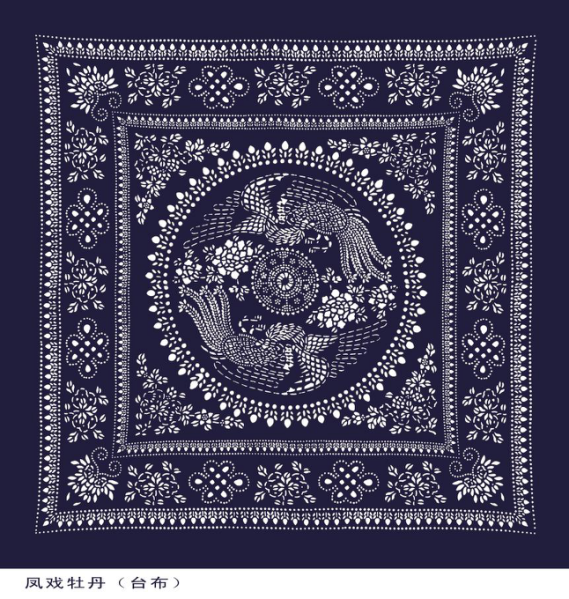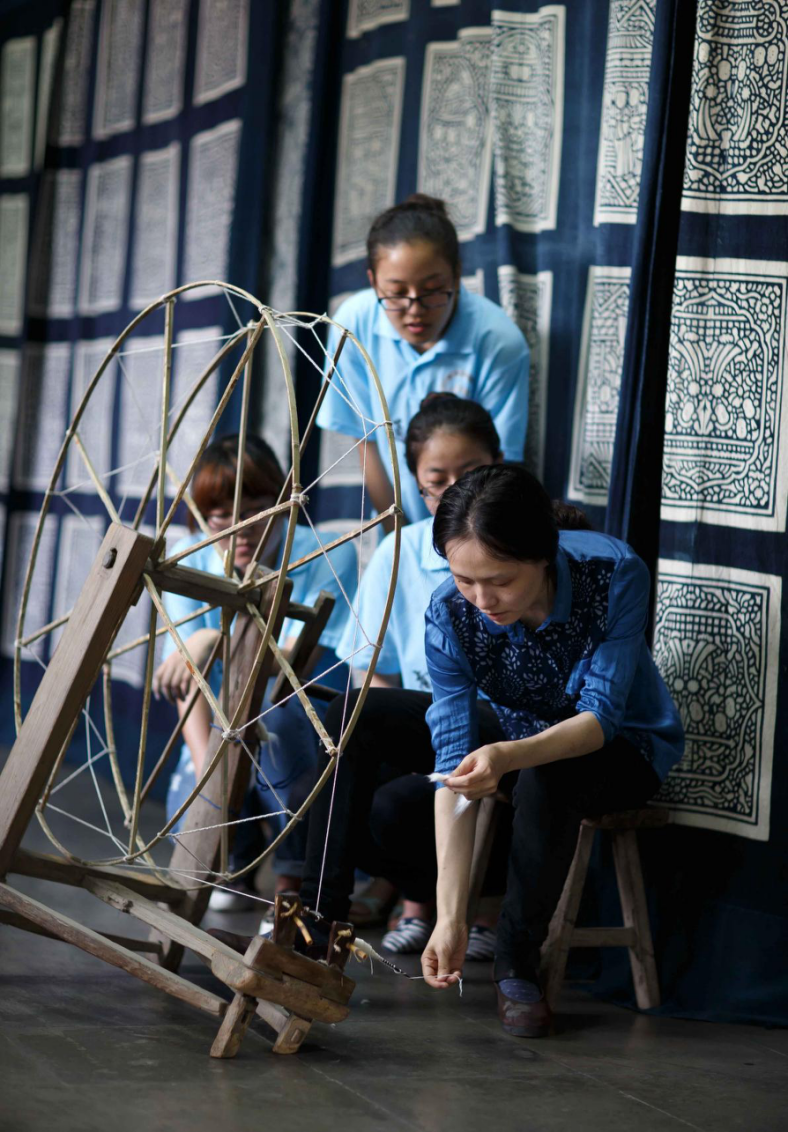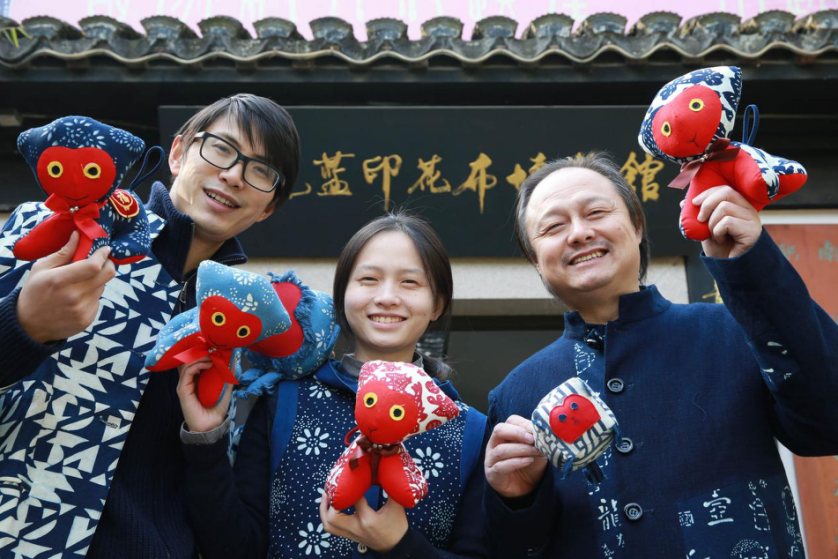The breeze and sunlight of spring bring a touch of warmth to the earth. Why not follow this warmth to Nantong, and get yourself indulged in its profound cultural heritages of “white and blue”.
Nantong Blue Calico
The history of the Nantong blue calico can be traced back to the Southern Song Dynasty (1127-1279). Folk artists invented a new dyeing technique by mixing up soybean powder, pulverized lime, rice bran, and other raw materials. With the development of the cotton textile industry, the indigo dyeing technique gradually took shape. The coastal environment and the climate of the town is also very suitable for growing cotton and indigo plant—the very original source for blue calico dyeing. Blue calico is hand-made, and it needs to go through many processes such as paper board engraving, starching, and dyeing before a plain and elegant blue calico is produced. Patterns are mostly characters from folk stories or auspicious ones composed of animals, plants, flowers, and birds, which carries people’s desire for a happy life. Nantong blue calico can be divided into two categories: blue background with white patterns and white background with blue patterns. The plain-looked cloth, however, presents a simple yet splendid world of art that is far beyond these two colors.
Blue calico is hand-made, and it needs to go through many processes such as paper board engraving, starching, and dyeing before a plain and elegant blue calico is produced. Patterns are mostly characters from folk stories or auspicious ones composed of animals, plants, flowers, and birds, which carries people’s desire for a happy life. Nantong blue calico can be divided into two categories: blue background with white patterns and white background with blue patterns. The plain-looked cloth, however, presents a simple yet splendid world of art that is far beyond these two colors. Blue calico used to be a form of textile of the Song Dynasty, however, it gradually faded out of people’s sight. The all-manual dyeing technique is seriously affected by modern industry. Thankfully, Wu Yuanxin, a master of Chinese crafts and arts, devoted himself to the inheritance and rebirth of the blue calico. In addition to protecting the traditional blue calico heritages, he took the lead in innovative pattern design and educational events. With his efforts, the Nantong Blue Calico Museum was also completed.
Blue calico used to be a form of textile of the Song Dynasty, however, it gradually faded out of people’s sight. The all-manual dyeing technique is seriously affected by modern industry. Thankfully, Wu Yuanxin, a master of Chinese crafts and arts, devoted himself to the inheritance and rebirth of the blue calico. In addition to protecting the traditional blue calico heritages, he took the lead in innovative pattern design and educational events. With his efforts, the Nantong Blue Calico Museum was also completed.
Nantong Blue Calico Museum, established in 1997 in the beautiful Haohe Scenic Area, adheres to its mission of publicizing Chinese folk art and protecting intangible folk cultural heritage, collecting tens of thousands of items and photos of excellent folk crafts.
The museum holds five exhibition halls, presenting the history and cultural background of the blue calico with different dynamic and static illustrations for visitors to appreciate the blue calico antiques, the history of its development, and the dyeing process. At the end of the journey, visitors can also experience the dyeing technique with their own hands to appreciate the charm and beauty of the blue calico. Take a walk on the old streets in the sunset. The old houses along the street seem to be telling stories of the past decades. If you think about it carefully, all kinds of things in this world are just like the blue calico – simple, plain but gorgeous and inclusive.
Take a walk on the old streets in the sunset. The old houses along the street seem to be telling stories of the past decades. If you think about it carefully, all kinds of things in this world are just like the blue calico – simple, plain but gorgeous and inclusive.
